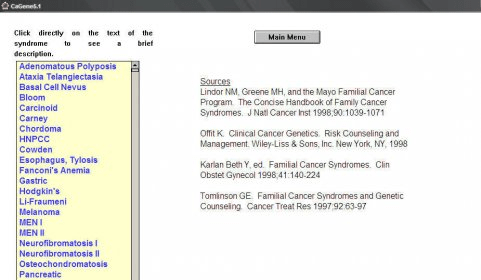
Mar 17, 2010 In conclusion, the BRCAPRO 5.0 model, together with an experienced clinical evaluation, is a useful tool in selecting cases of male breast cancer for mutation analysis in the presence of MBC cases with a negative FH.
 File Scavenger 5.3 Crack For Mac [Portable] Torrent [Updated] File Scavenger 5.3 Crack For Mac Portable guarantees quick information recuperation. The device is easy to use and performs incredibly. The apparatus recoups the records themselves as well as the registry site structure.
File Scavenger 5.3 Crack For Mac [Portable] Torrent [Updated] File Scavenger 5.3 Crack For Mac Portable guarantees quick information recuperation. The device is easy to use and performs incredibly. The apparatus recoups the records themselves as well as the registry site structure.
Methods A total of 195 families with multiple affected individuals with breast or ovarian cancer were recruited through the INHERIT (INterdisciplinary HEalth Research International Team on BReast CAncer susceptibility) BRCAs research program. Observed BRCA1 and BRCA2 mutation status was compared with predicted carrier probabilities under the BOADICEA and BRCAPRO models. The models were assessed using Brier scores, attributes diagrams and receiver operating characteristic curves. Log relative risks for breast and ovarian cancer in mutation carriers versus population risks were estimated by maximum likelihood, using a modified segregation analysis implemented in the computer program MENDEL. Twenty-five families were eligible for inclusion in the BRCA1 penetrance analysis and 27 families were eligible for the BRCA2 penetrance analysis. Results The BOADICEA model predicted accurately the number of BRCA1 and BRCA2 mutations for the various groups of families, and was found to discriminate well at the individual level between carriers and noncarriers.

BRCAPRO over-predicted the number of mutations in almost all groups of families, in particular the number of BRCA1 mutations. It significantly overestimated the carrier frequency for high predicted probabilities. However, it discriminated well between carriers and noncarriers. Receiver operating characteristic (ROC) curves indicate similar sensitivity and specificity for BRCAPRO and BOADICEA. The estimated risks for breast and ovarian cancer in BRCA1 and BRCA2 mutation carriers were consistent with previously published estimates. BRCA1 and BRCA2 are the most important breast cancer susceptibility genes identified to date.
A recent meta-analysis of 22 population-based studies of breast and ovarian cancer [ ] estimated the risk for breast cancer by age 70 years in BRCA1 and BRCA2 carriers to be 65% and 45%, respectively. The corresponding ovarian cancer risks were 39% and 9%, respectively. A number of other studies have investigated the penetrance of these mutations, and risks have been found to vary by birth cohort, mutation position in the gene, ascertainment criteria and population studied [ – ]. Having precise estimates of these risks is important for counselling mutation carriers, and such estimates are fundamental components of cancer risk prediction models.
Such models are currently being used and developed for counselling high risk women in clinical genetics centres [ – ]. Population isolates or founder populations provide a particular challenge for risk models, because the frequency of mutations may be altered by the occurrence of specific founder mutations that may attain relatively high frequency. Notable examples of this are the founder BRCA1 and BRCA2 mutations in the Ashkenazi Jewish population, and the founder BRCA2 population in Iceland [, – ]. The French-Canadian population is an example of such a founder population. The province of Quebec population includes about 6 million French-Canadians, who are descendants of about 10,000 immigrants, mostly from France, who settled in Nouvelle France between 1608 and 1760.